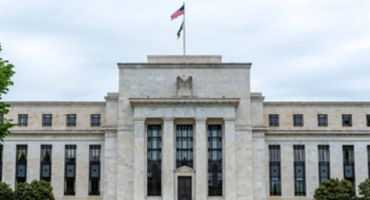- Fixed Income Portfolio Manager
Skip to main content
- Funds
- Capabilities
- Insights
- About Us
Asset classes
The views expressed are those of the author at the time of writing. Other teams may hold different views and make different investment decisions. The value of your investment may become worth more or less than at the time of original investment. While any third-party data used is considered reliable, its accuracy is not guaranteed.
An inverted US Treasury yield curve is often viewed as a reliable recession indicator, so the significant flattening of the curve over the past few months — and in an environment of persistent inflationary pressures, to boot — has some economic prognosticators calling for an impending US recession. I say not so fast.
While I acknowledge that the economic outlook will likely deteriorate at the margin as monetary policy tightens, particularly if energy prices remain elevated, I do not believe the recent flattening of the yield curve portends a US recession in the near term. US consumer balance sheets look very healthy, household savings rates are robust, and rising worker wages may help cushion against the impact of higher goods and energy prices. Furthermore, the US should remain relatively shielded from today’s uncertain geopolitical landscape, given its lower oil imports from Russia and its greater domestic oil production compared to Europe.
The recent flattening (and inversion) between the two-year and 10-year parts of the yield curve has been primarily driven by the increase in short-term yields following the more aggressive policy tightening stance adopted by the US Federal Reserve (Fed) in response to stubborn inflationary pressures. Yet the three-month and 10-year “shape” of the curve — historically a more reliable recession indicator — still has a ways to go before inverting, given that the Fed has only just begun to hike the fed funds rate (Figure 1).
The Fed intends to tighten financial conditions in an effort to alleviate the effects of higher inflation, but it will likely be mindful of the attendant risks to the economic cycle. Specifically, I expect the Fed to remain keenly cognizant of the danger of tightening policy too aggressively against a backdrop of heightened geopolitical tensions. This type of measured approach should further contribute to the “stickiness” of inflation and could raise the odds of a stagflationary outcome (i.e., high inflation in tandem with slowing growth).
That being said, I think a lot would need to go wrong in order for US economic growth to contract in the period ahead. All else being equal, it would likely take one to two years of steady Fed interest-rate hikes for tighter monetary policy to tip the US economy into recession. Projections by the Fed and futures markets have the policy rate increasing to 2.8% and 2.6%, respectively, by the end of 2023 — only slightly above the neutral rate and not overly restrictive, in my view.
While inflation can indeed erode the returns provided by traditional high-grade, rate-sensitive fixed income assets, I believe a number of bond sectors can prove resilient and even be net beneficiaries of higher inflation, including persistently elevated energy prices.
Obvious choices for sectors that can potentially benefit from inflation include bank loans (given the floating-rate nature of their coupons, which reset higher as interest rates rise) and Treasury Inflation-Protected Securities, aka TIPS (since their coupons are directly indexed to, and thus protected from, inflation). I also expect high-yield corporates, convertible bonds, securitized credit, and emerging markets (EM) local debt to outperform most traditional high-grade fixed income sectors in a rising-rate/high-inflation environment, particularly if the global economic expansion continues throughout 2022 and beyond. Some points to consider:
While my outlook for the US credit cycle has worsened somewhat on the back of tighter financial conditions and significant inflationary pressures, I still do not believe a central bank-induced recession is around the corner. I am seeing plenty of investment opportunities in today’s environment in spite of — in fact, because of — the high levels of economic uncertainty and market volatility that have characterized 2022 so far.

Practical portfolio considerations for a new economic age
Continue readingChart in Focus: Is the Fed rate cut positive for risk?
Continue readingChart in Focus: What do higher long-end yields mean?
Continue readingChart in Focus: Fed rate cuts resume — What’s next for investors?
Continue readingURL References
Related Insights

Low tide, sharp eyes: What to pick up
Fixed Income Managers Campe Goodman and Rob Burn share their outlook for credit in 2026 and discuss how investors can reposition for an environment where opportunities are harder to find.

Practical portfolio considerations for a new economic age
Solutions Director Andrew Sharp Paul explores practical portfolio considerations for a new economic age, focusing on quality equities, discerning bonds, and local APAC opportunities.

Rapid Fire Questions with Ross Dilkes
In this edition of “Rapid Fire Questions,” fixed income portfolio manager Ross Dilkes shares his views on the Asia credit market—covering the macro outlook, China’s momentum, the most compelling opportunities across the region, and key risks shaping the next 12 months.

Chart in Focus: Is the Fed rate cut positive for risk?
In this edition of Chart in Focus, we examine how the Fed’s long-awaited interest rate cut may influence risk assets.

Chart in Focus: What do higher long-end yields mean?
Long-end yields have climbed on concerns over structural growth and fiscal expansion. In this edition of Chart in Focus, we explore how shifting yield curves are reshaping opportunities across asset classes.

Chart in Focus: Fed rate cuts resume — What’s next for investors?
In this edition of Chart in Focus, we explore the Fed’s return to rate cuts after a strategic pause. We examine how this move, alongside diverging central banks paths, could shape the outlook for risk assets.

FOMC: Cushioning the US labor market
Fixed Income Portfolio Manager Jeremy Forster analyzes the Fed's decision to cut interest rates at the September FOMC meeting.

How a changing Europe is reshaping credit markets
Portfolio Managers Derek Hynes and Konstantin Leidman explore how a changing Europe is reshaping the region's credit markets and identify key takeaways for investors.

Chart in Focus: Where are rates headed?
In this edition of Chart in Focus, we take a look at where rates have been headed and potential implications moving forward.

(Re)emerging markets: 10 reasons for optimism
Our experts identify 10 reasons why now may be the time for investors to reconsider emerging markets.

Facing a new economic reality
We summarize our 2025 mid-year outlooks.
URL References
Related Insights
Past results are not necessarily indicative of future results and an investment can lose value. Funds returns are shown net of fees. Source: Wellington Management
© 2025 Morningstar, Inc. All Rights Reserved. The information contained herein: (1) is proprietary to Morningstar; (2) may not be copied or distributed; and (3) is not warranted to be accurate, complete or timely. Neither Morningstar nor its content providers are responsible for any damages or losses arising from any use of this information. The Overall Morningstar Rating for a fund is derived from a weighted average of the three, five, and ten year (if applicable) ratings, based on risk-adjusted return. Past performance is no guarantee of future results.
The content within this page is issued by Wellington Management Singapore Pte Ltd (UEN: 201415544E) (WMS). This advertisement or publication has not been reviewed by the Monetary Authority of Singapore. Information contained on this website is provided for information purposes and does not constitute financial advice or recommendation in any security including but not limited to, share in the funds and is prepared without regard to the specific objectives, financial situation or needs of any particular person.
Investment in the funds described on this website carries a substantial degree of risk and places an investor’s capital at risk. The price and value of investments is not guaranteed. The value of the shares of the funds and the income accruing to them, if any, and may fall or rise. An investor may not get back the original amount invested and an investor may lose all of their investment. Investment in the funds described on this website is not suitable for all investors. Investors should read the prospectus and the Product Highlights Sheet of the respective fund and seek financial advice before deciding whether to purchase shares in any fund. Past performance or any economic trends or forecast, are not necessarily indicative of future performance. Some of the funds described on this website may use or invest in financial derivative instruments for portfolio management and hedging purposes. Investments in the funds are subject to investment risks, including the possible loss of the principal amount invested. None of the funds listed on this website guarantees distributions and distributions may fluctuate and may be paid out of capital. Past distributions are not necessarily indicative of future trends, which may be lower. Please note that payment of distributions out of capital effectively amounts to a return or withdrawal of the principal amount invested or of net capital gains attributable to that principal amount. Actual distribution of income, net capital gains and/or capital will be at the manager’s absolute discretion. Payments on dividends may result in a reduction of NAV per share of the funds. The preceding paragraph is only applicable if the fund intends to pay dividends/ distributions. Performance with preliminary charge (sales charge) is calculated on a NAV to NAV basis, net of 5% preliminary charge (initial sales charge). Unless stated otherwise data is as at previous month end.
Subscriptions may only be made on the basis of the latest prospectus and Product Highlights Sheet, and they can be obtained from WMS or fund distributors upon request.
This material may not be reproduced or distributed, in whole or in part, without the express written consent of Wellington Management.